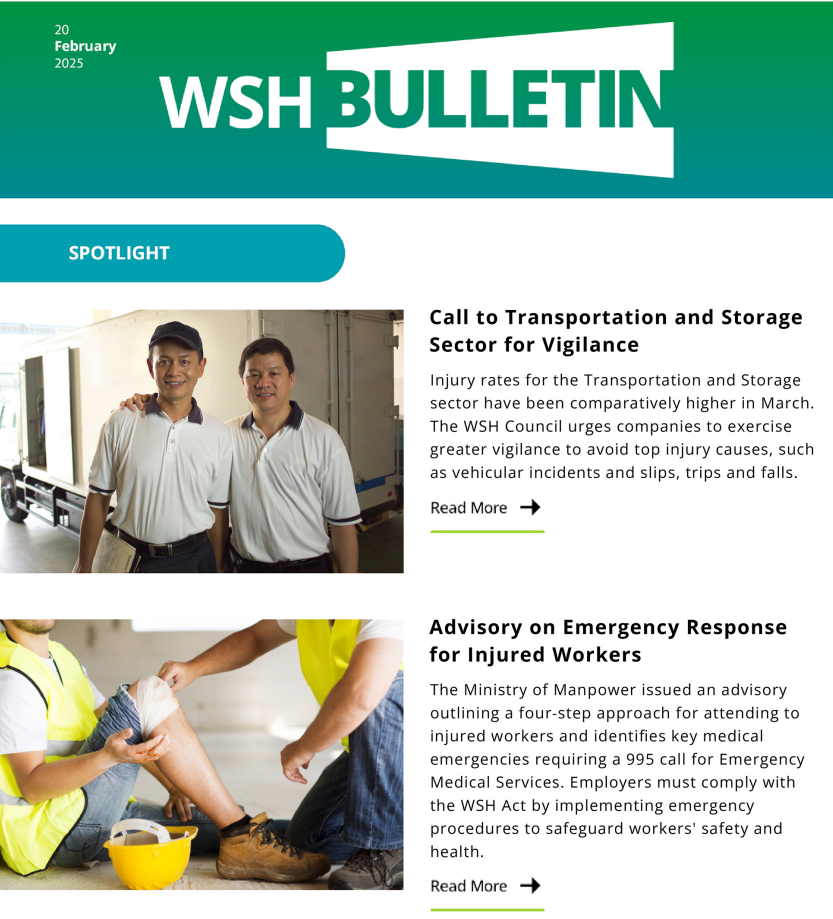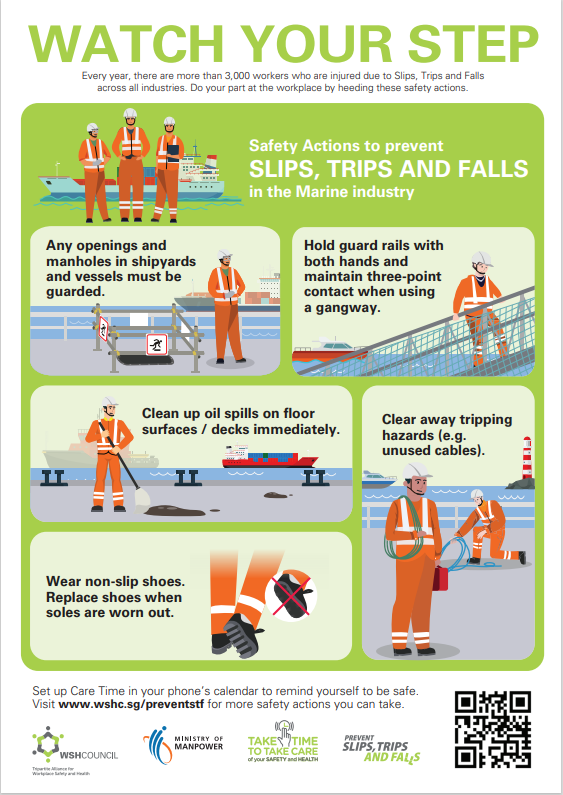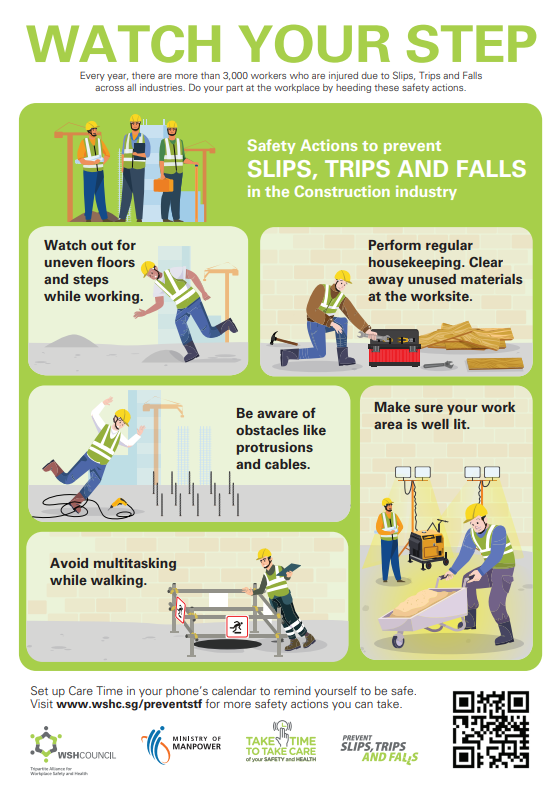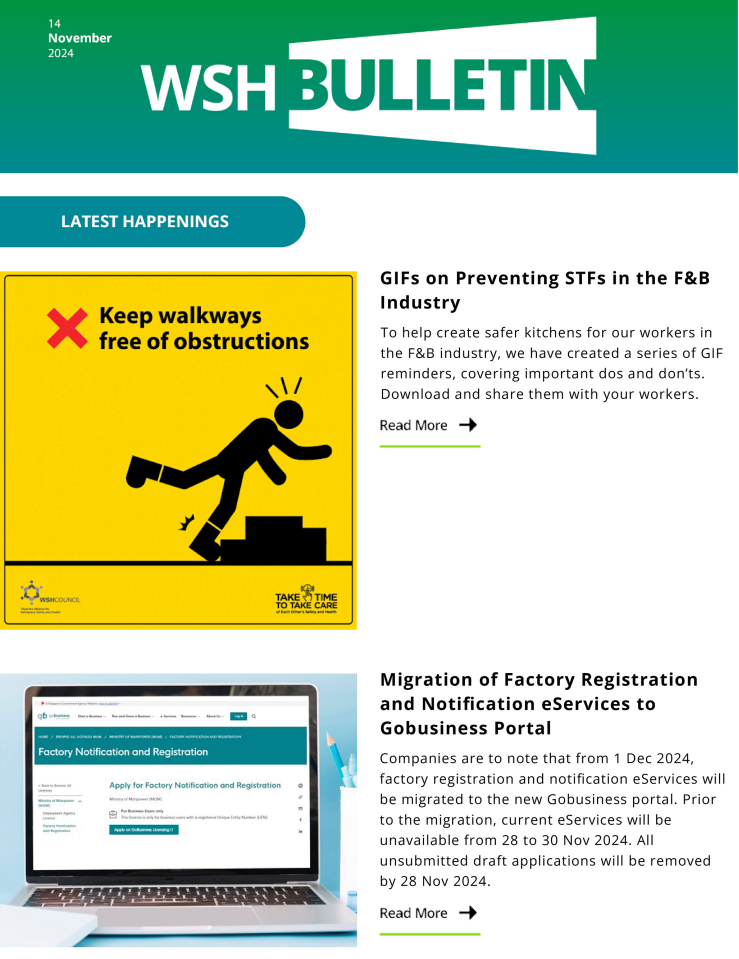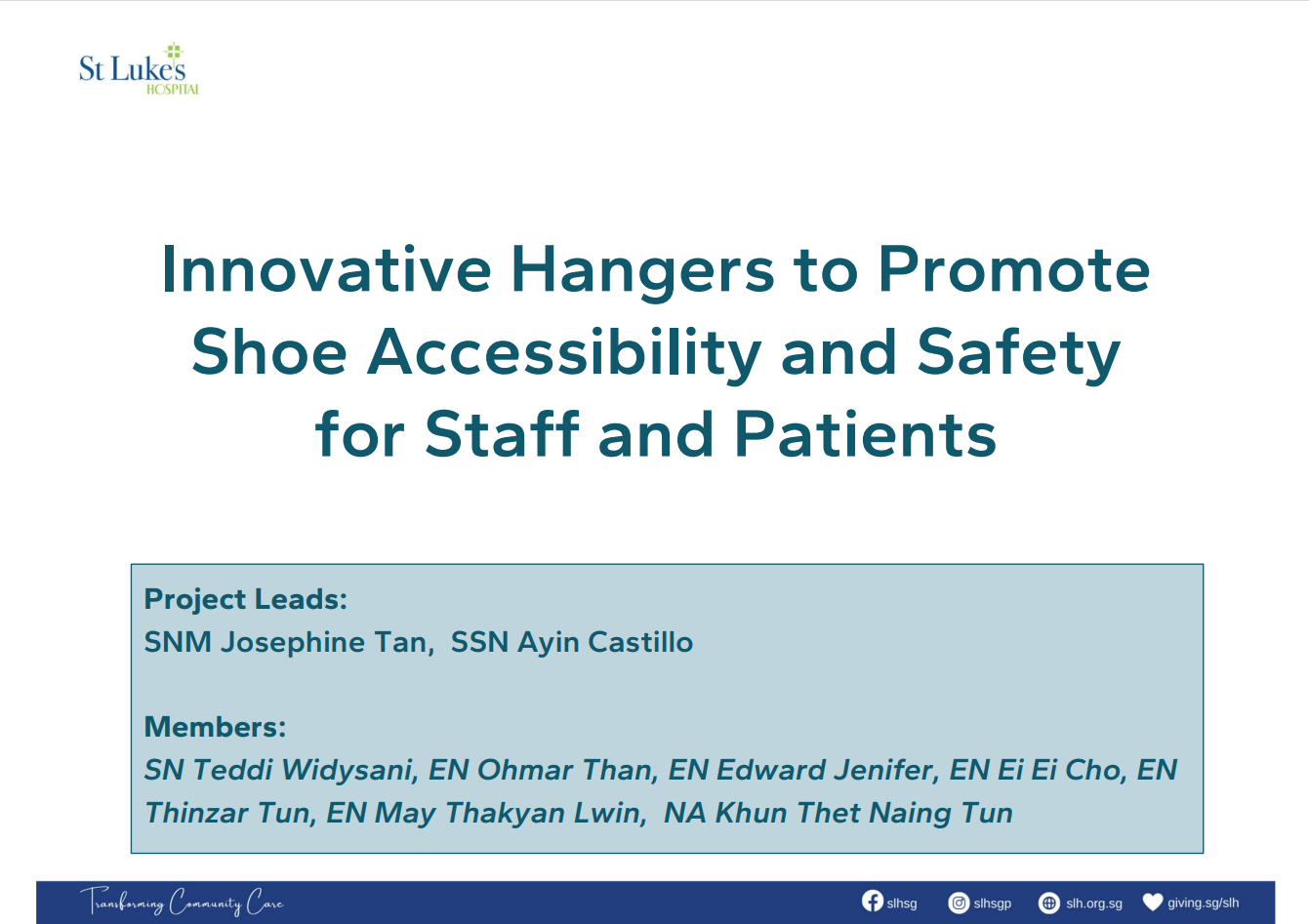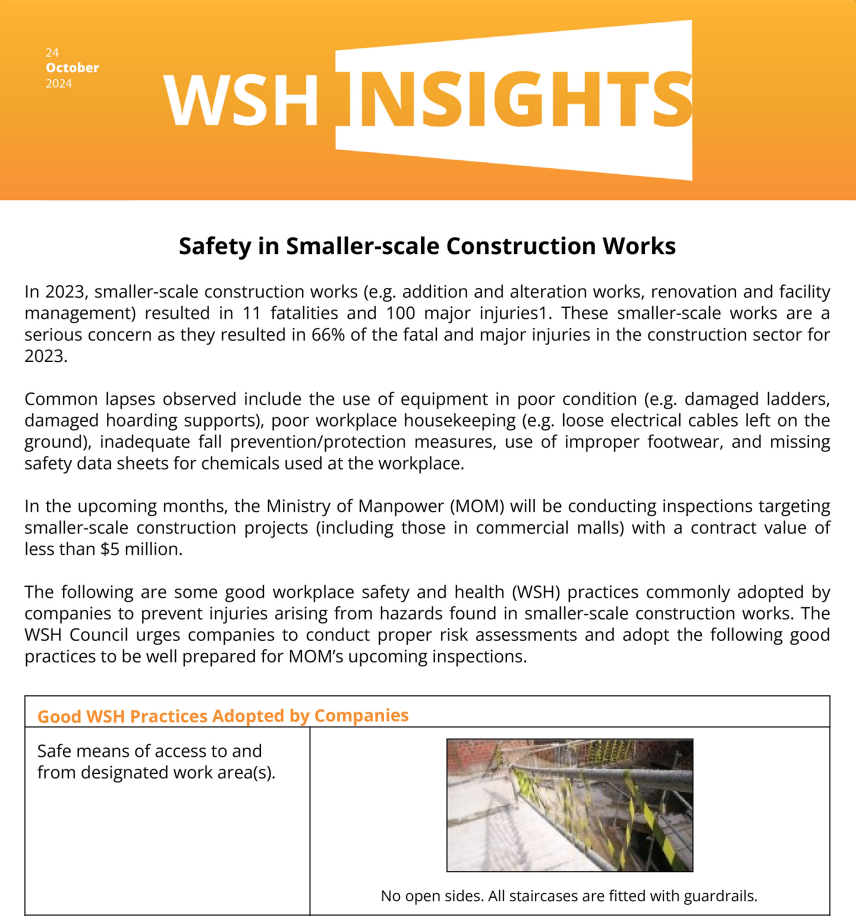About Slips, Trips and Falls
Learn the importance of protecting yourself from slips and trips. And find out more about related laws, industry standards and key statistics.
Definition: Slips, Trips and Falls
|
Term |
Definition |
|
Slips |
Falling on the same level due to loss of balance when there is too little friction between the foot and the floor. For example, when stepping on a wet or oily surface. |
|
Trips |
Falling on the same level due to loss of balance when:
|
|
Falls |
A downward movement, typically rapidly and freely, from a higher to a lower level. |
Laws and Industry Standards
As an employer, you are expected to comply with Singapore's WSH laws. You should pay particular attention to:
- WSH (Risk Management) Regulations
- WSH (Incident Reporting) Regulations
- Work Injury Compensation Act (WICA)
You should also observe relevant industry standards, such as:
- Code of Practice on WSH Risk Management (PDF);
- SS 513-1: Specification for Personal Protective Equipment - Part 1: Safety Footwear; and
- SS 513-2: Specification for Personal Protective Equipment - Part 2: Test Methods for Footwear.
Please refer to the WSH (Approved Codes of Practice) Notification for the full list of approved Codes of Practice.
Statistics
- Slips, trips and falls are one of the top causes of workplace deaths.
- Slips, trips and falls are the most common causes of workplace injuries. It can cause sprains, strains, fractures, head injuries and deaths.
- Slips, trips and falls account for more than 25% of all workplace injuries and affected more than 3,000 employees each year between 2014 and 2018.
Refer to Workplace Safety and Health Reports for the latest WSH National Statistics Report.

